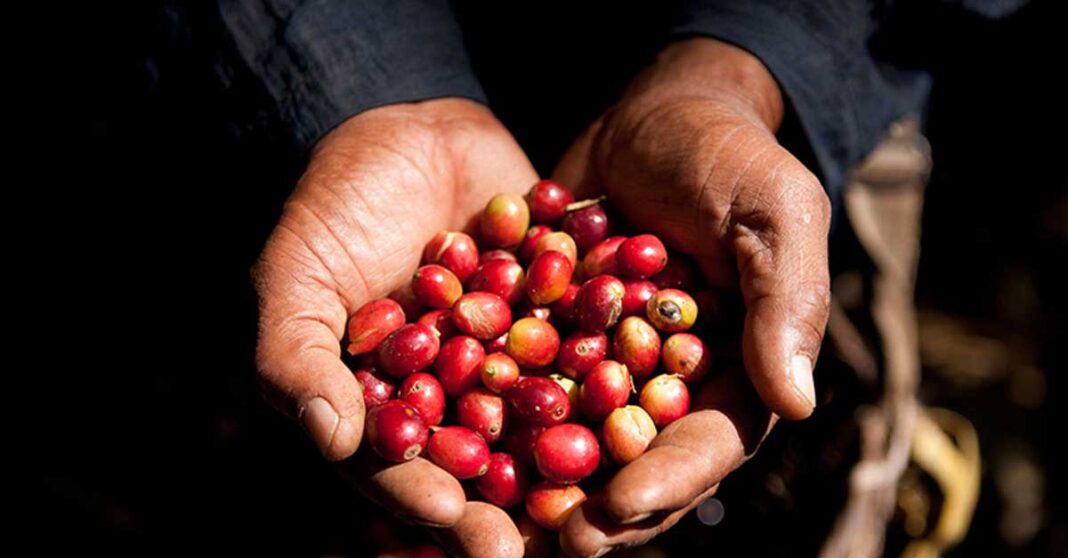According to recent reports, Vietnam’s traditionally massive stockpile of coffee beans is dwindling, which is anticipated to increase global coffee prices. How will this affect Laos’s coffee export?
Amid fluctuating commodity prices, difficult logistics, and changing regulations and tax rates, Laos faces a number of challenges in exporting its coffee. Yet, with the emergence of new transportation corridors, and potential supply shortfalls in neighboring Vietnam, there could be opportunities for market development and increased tax revenue to offset Laos’ fiscal concerns.
Even though the harvest season for Lao coffee will start between the end of this month and the beginning of next month, Lao coffee producers are now coming across issues that may hinder its exports this year.
Lao Coffee Association President, Mrs. Bounheuang Lithdang, spoke to The Laotian Times about the challenges of exporting coffee from Laos. Notably, about the recent adjustment of tax rates for selling coffee having gone up from 7 percent to 15 percent, affecting the appeal of coffee export from Laos.
“The legislation regarding coffee taxes is appropriate, although the law was not initially enforced. Now, owing to the change, coffee entrepreneurs are unable to export with ease, making them hoard their coffee,” Mrs. Bounheuang said.
This hoarding affects the regular functioning of the export market, and also keeps farmers from benefitting from increasing prices.
Mrs. Bounheuang noted that Laos coffee doesn’t necessarily profit from higher export prices. The commodity export companies who buy and export the coffee are exposed to substantial risk due to fluctuating costs and export challenges, so they tend to purchase in bulk at a lower cost, then wait to sell it when prices rise.
When asked about the use of the new rail route for ease of export, Mrs. Bounheuang added that Lao coffee has not yet been shipped via the Laos-China Railway as that would need special government authorization, after finalization of commodity export protocols and categorization.
She also informed that regular commercial agreements for the buying and selling of coffee exist between Laos and Vietnam. But in order to utilize this opportunity effectively, both countries urgently need to establish new routes.
Benjamin Barutzki, a team leader of ECCIL Coffee Advocacy Working Group, noted that coffee is a desirable plant for cultivation from an environmental standpoint, as it tends to have lower fertilizer inputs than alternatives like cassava.
Additionally, he noted that the value of Lao coffee exports can be increased through the introduction of different varieties of the coffee plant. Typically Lao farmers grow a variety called coffea arabica catimor, which is hardy and produces well, but sells for lower prices.
Lao coffee must meet high quality standards in order to compete with the increase in worldwide prices and increase exports of coffee.
He noted that further reducing profitability for producers, farmers overwhelmingly tend to export through Thailand for a variety of reasons, including familiarity, despite fetching lower prices in that market (they do not fetch lower prices in Thailand, but they pay a high price for transportation which reduces their profit).
“There are not enough sources of transportation between Laos and Vietnam on coffee exportation. For now, nearly all the coffee in Laos is exported only to Thailand and coffee exporters in Laos don’t make use of Vietnam as a partner for exporting their coffee,” Benjamin observed.
Since it is difficult to get a fair price from Thailand, it increases potential desirability of export through Vietnam. However, a high-level agreement between the two countries is needed, as well as some outreach to farmers about new possibilities for exportation.
He believes that an agreement between Laos and Vietnam to export coffee from Laos to the world will help bring the current levels of exportation to and through Vietnam up, as well as bringing those exports into more regulatory clarity. This can be achieved with effort from the relevant governments to advise coffee farmers and exporters in Laos.
Meanwhile, Mr. Barutzki added that these factors are causing many coffee growers in southern Laos to abandon the crop for other, more fertilizer demanding cash crops, such as cassava.



